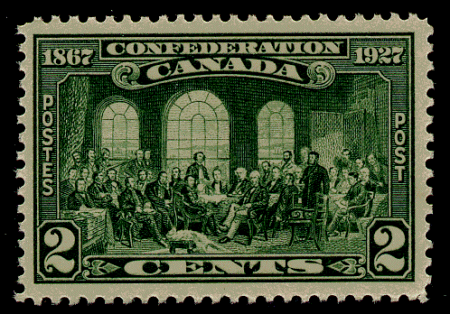 | ||||||||||||||||||||||||||||||||||||||||||||||||||||||||||||||||||||||||||||||||||||||||||||||||||||||||||||||||||||||||||||||||||||||||||||||||||||||||||||||||||||||||||||||||||||||||||
Last
revised: |
Claude Bélanger, Title given to the parliamentarians of the United Province of Canada (Quebec and Ontario), Nova Scotia, New Brunswick, Prince Edward Island and Newfoundland that attended at least one of the three constitutional conferences held to hammer out the federal constitution of 1867. These conferences were held in Charlottetown in August-September 1864, in Quebec City in October of the same year and in London in December 1866 and early 1867. There were 36 Fathers of Confederation. Some consider that Harry Bernard, who attended the Charlottetown Conference as the Recording Secretary, should also be counted. It is of interest to note that some of the Fathers of Confederation were actually opposed to the plan of Union, and fought the project bitterly at the conferences and before public opinion.
Conference(s) Attended by the Fathers of Confederation 1864-1867
The Harris painting: The image that Canadians have of the Fathers of Confederation is derived from the famous painting of the scene of the Quebec conference that Robert Harris was commissioned to paint in 1883. Harris was born in Wales in 1849. His family emigrated to Prince Edward Island in 1856. After studying art in Boston, Paris and Rome, he returned to Canada where his reputation as an illustrator and a painter grew steadily. He completed the Fathers of Confederation in 1884. The painting was a large-scale oil canvas measuring 13 ft. X 8. For his subject, Harris chose the scene of the Quebec conference. Careful examination of the painting shows ships in the harbour of Quebec City. The Fathers are assembled around a large table and are posed facing the artist as if a photograph was being taken. The central figure is that of John A. Macdonald around whom the painting is constructed. He stands in the centre and his body is perfectly framed by the central window. He has a document in hand (the 72 resolutions?). George Etienne Cartier is sitting immediately to his right. Hector Langevin is sitting across the table, slightly to the left of Macdonald. George Brown sits in the front row with his legs crossed, the third person to the right of Macdonald. Charles Tupper, represented wearing a dark suit and with a document in his hand, stands in the front row; aside from Macdonald, he is the most prominent one in the painting. The Harris painting is a composite. He placed 34 individuals in the painting, that is all those that had attended the Charlottetown and the Quebec conferences. He included Bernard in the scene. The famous painting was placed in the Parliament building in Ottawa until 1916. On February 3, 1916, the painting was destroyed in the great fire that consumed much of the Parliament building. Fortunately, a copy of it had been made. It still hangs today in Charlottetown, P. E. I. Being used to make two postal issues of Canada also immortalized the Harris painting. The first was done in 1917, on the occasion of the 50th anniversary of Confederation. The second, reproduced below, was issued in 1927, at the time of the 60th anniversary of Confederation. This stamp is part of the first issue of stamps of Canada to have been fully bilingual.
© 2001 Claude Bélanger, Marianopolis College
| |||||||||||||||||||||||||||||||||||||||||||||||||||||||||||||||||||||||||||||||||||||||||||||||||||||||||||||||||||||||||||||||||||||||||||||||||||||||||||||||||||||||||||||||||||||||||
